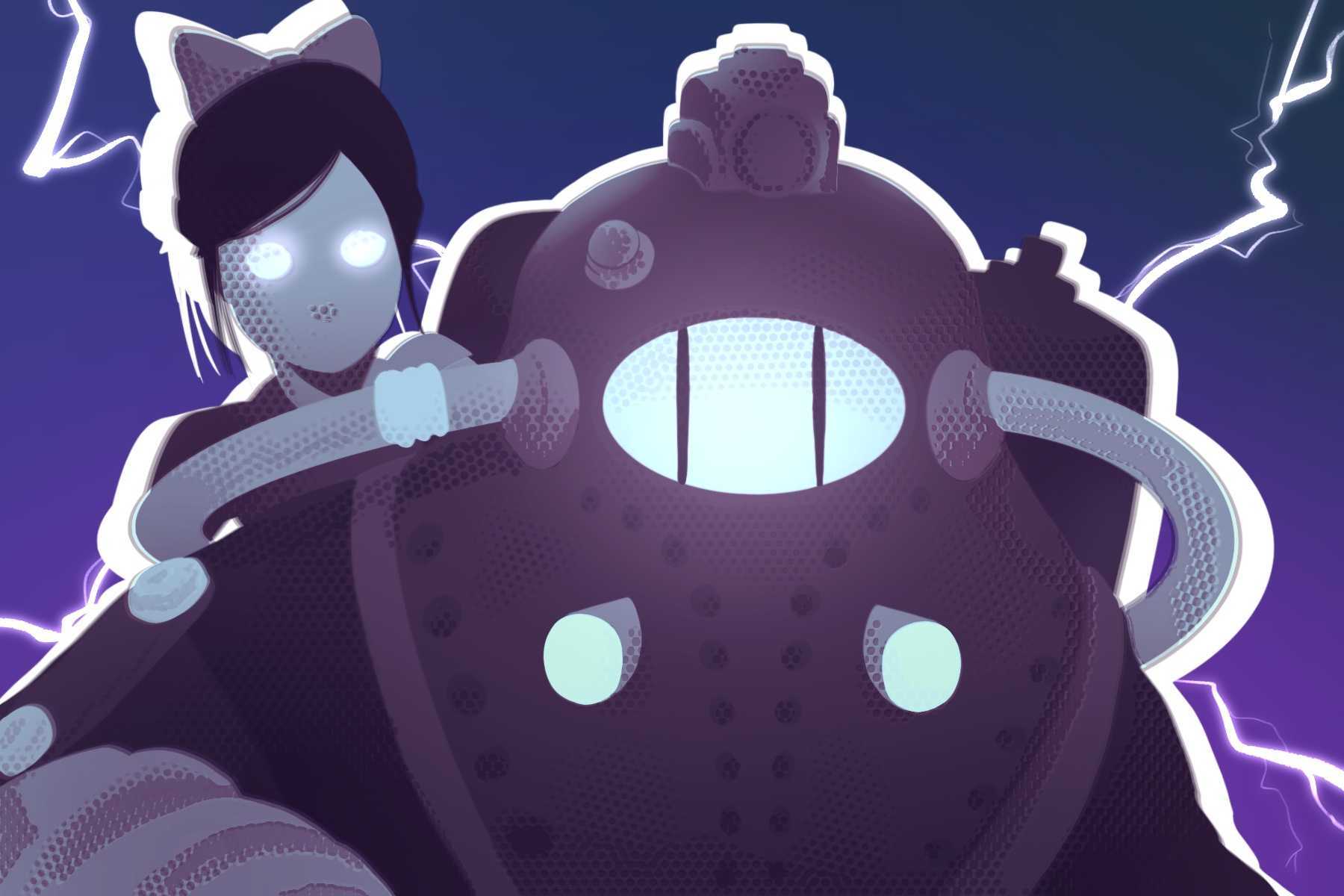With over 37 million copies sold (as of May 2021) and more selling daily, the BioShock franchise is one of the most successful in video game history. A combination of innovative mechanics, philosophical ideals and phenomenal concept art, the game takes place in the underwater city of Rapture, which has hosted some of the best story arcs in the gaming world. The first game won the BAFTA-sponsored Game of the Year award and the following two installments, BioShock 2 and BioShock Infinite, bagged several nominations and wins in sound design, music, artistic achievement and performance categories. Now, a fourth installment is confirmed to be in development, but it could do more harm than good.
Back in 2007 when it was first released, BioShock hit the shelves as a defibrillator for the video game industry. A first-person shooter that had been in development for five years, it fused the potential of storytelling and game mechanics, and, as New York Mag put it, “proved that video games could be art.” Though expectations following such reviews were high enough that disappointment seemed inevitable, the game delivered in spades and changed the future of the video game industry.
A first-person shooter with the pioneering mindset that “the story was as important as the visuals,” the narrative and environmental aspects of the game encouraged the player to venture beyond the traditional “go forth and conquer” mentality. Instead, players could investigate the worlds of Rapture (the underwater city of BioShock 1 and 2) and Columbia (the floating city of BioShock Infinite), stitching together a comprehensive picture of how they got to that point in the story. This made the game more atmospheric and experiential for players, as opposed to previous cinematic iterations of games that had audiences sitting through minutes-long cutscenes (see: Metal Gear Solid, whose third game has a 25-minute cutscene and a 71-minute cutscene at the wrap of the fourth installment).
Ken Levine, the creator of the BioShock franchise as well as a writer and designer on System Shock 2 (another game hailed as a breakthrough for the industry), has said that he always “wanted to change the way people [talked] about shooters.” The richness and detail of Rapture and Columbia was second only to the fully fleshed-out antagonists at every step, characters that made players question the world around them (both in-game and real-life).
“Will is a very important thing in video games,” Levine explained, speaking on how BioShock turned the trope on its head by giving players little control even when moving through the world of their (mistakenly) free will. Interestingly, players still exercised free will through decisions they could make that would have a butterfly effect at the end: The game had alternate endings depending on actions the player took, proving that they did have some free will in the end.
Welcome to Rapture
Dropped into the middle of a 1960s, going-defunct underwater city, the main protagonist of BioShock, Jack, is forced to rely on radio transmissions and instructions to figure out what’s going on. Similar to a good novel, the more progress is made, the more the pieces fall into place. Initially a horror game, complete with low lighting, jump scares and creepy mutterings and echoes of splicers (strung-out addicts of ADAM, the game’s gene-altering drug that lends its users supernatural abilities), it becomes more of an action-oriented psychological thriller once the player gets their bearings. With a wealth of weapons to choose from and upgrades to build, the necessary gameplay mechanics and details are filled out, with the wonderful addition of Plasmids.
Giving the player genetically altered powers like a “fist full of lightning,” the ability to call up an insect swarm to sic on enemies and the aptly named “Incinerate!,” Plasmids change the nature of the game to something that requires more strategy. At times, using a swarm of bees on an enemy is less work than clubbing them to death with a wrench, and it’s certainly beneficial when facing a horde of foes. Plasmids can be especially helpful when fighting Big Daddies, the protectors of Little Sisters (young girls who have been altered mentally and genetically to collect ADAM) developed to have a parental instinct to eliminate any threat to the children. Throughout the game, Little Sisters can either be saved or harvested by players, leading to one of the three different endings.
BioShock 2, taking place 10 years later, uses many of the same mechanics with the added bonus of being able to equip Plasmids and a weapon at the same time. Players no longer must switch between hands (left for Plasmids, right for weapons in the previous game), a process that costs valuable seconds in a firefight. Playing as Subject Delta, a protector of the ADAM-gathering Little Sisters, the story changes from one of discovery to a hunting down of enemies.
Tasked with finding and saving one of the Little Sisters, the fight evolves similarly to the first game in that the player struggles with who they are; without the mystery of the unknown, however, more focus is lent to both playable and non-playable characters (NPCs). The game also uses the same butterfly effect as the first, with three alternate endings dependent on interactions with NPCs and the Little Sisters of the first game. There’s more moral ambiguity in the second game, with players given the backstory and rationales for specific NPCs, at which point they must decide whether or not to spare them (arguably, some don’t deserve saving).
The third installment, BioShock Infinite, gives players much less choice. Not only is there one fixed ending, but there’s even a seemingly symbolic choice that in the end has zero effect on anything but the player’s mindset throughout the game. Set in a city floating above the clouds, the protagonist, Booker DeWitt, is the ultimate redemption arc character (next to Joel Miller in The Last of Us). Similar to BioShock 2, the goal is to find and save a daughter figure, but in this case, the woman (Elizabeth) acts as a follower, providing useful tips, ammunition and random stashes of money at opportune moments.
Traveling with a companion in a sunlit city is both jarring and refreshing in contrast to the first two games, but just like Rapture, the city of Columbia has its own perversions and skeletons very much not-in-the-closet (read: the setting is 1912 and the ruler of the city is a fascist that believes in American Exceptionalism). At the end of BioShock Infinite, the characters even return to Rapture for a short playout of events, tying all three games together with a neat bow. Because of the finality of BioShock Infinite, the possibilities left for a fourth chapter are slightly restricted, but there’s still more to the BioShock story.
The Next Chapter
BioShock 1 ends happily for the main protagonist. Jack grows old and leads a full life above the surface, leaving Rapture behind for good. This motivated the second game to give players a new protagonist, Subject Delta, as a means of reentering the city and diving back into the Rapture lore from the other side of the veil. At the close of the second game, there was enough ambiguity to open the door for a story that followed the surviving characters. Instead of following the preceding storylines, though, the third game opened with entirely new characters in a completely new setting. Publisher 2K Games recently set off a round of speculation when it officially confirmed that an untitled fourth game is in the works, but before its release, gamers have some comments and complaints.
Many saw the divergence of BioShock Infinite as a betrayal of the franchise’s original concepts, with the “disturbing atmosphere, feeling of constant disquiet, and complicated themes” somewhat lost in Infinite’s recycle-and-reuse approach, particularly evident in the mechanics. Despite being a roaring achievement in its own right, with more than 11 million copies sold and considered one of the greatest video games ever made, players voiced a desire to return to the “claustrophobic setting and [the] thorough environmental storytelling” of the first games. Infinite, though it had one of the best storylines seen in modern gaming, didn’t break the mold the same way the first BioShock did: The game copied its predecessor by replacing the first two games’ “Plasmids” with newly named “Vigors” and going back in time.
According to a leak, BioShock 4 is rumored to be set in a fictional 1960s Antarctic city with an open-world environment design. Everything is being kept under wraps, but one aspect of the franchise that has great potential is the multiverse concept, introduced through Infinite’s character Elizabeth, who could open Tears into other worlds. An early iteration of the Marvel multiverse concept, Tears allowed her to step into other versions of reality and see multiple versions of the same person play out in each world, with actions echoing each other, although not identically. This idea opens an abundance of possibilities for the future story: Any version of past, now-familiar characters could reappear to continue the narrative.
Unfortunately, there is the chance that the fourth game could rehash the same mechanics and Plasmid/Vigor concepts as the first three without pushing the envelope, but arguably an extraordinary story could help players overlook any repetitive elements. The only worry is that a fourth game, should it disappoint, would indelibly mar the BioShock name as a franchise that should have stopped at three — a fate that befalls many franchises that try to expand and encompass too much without the proper conviction and effort behind the sequels. The current trilogy of games is without a doubt an incontrovertible monument to the power of storytelling and art in video games. As for the fourth installment, only time will tell.

















